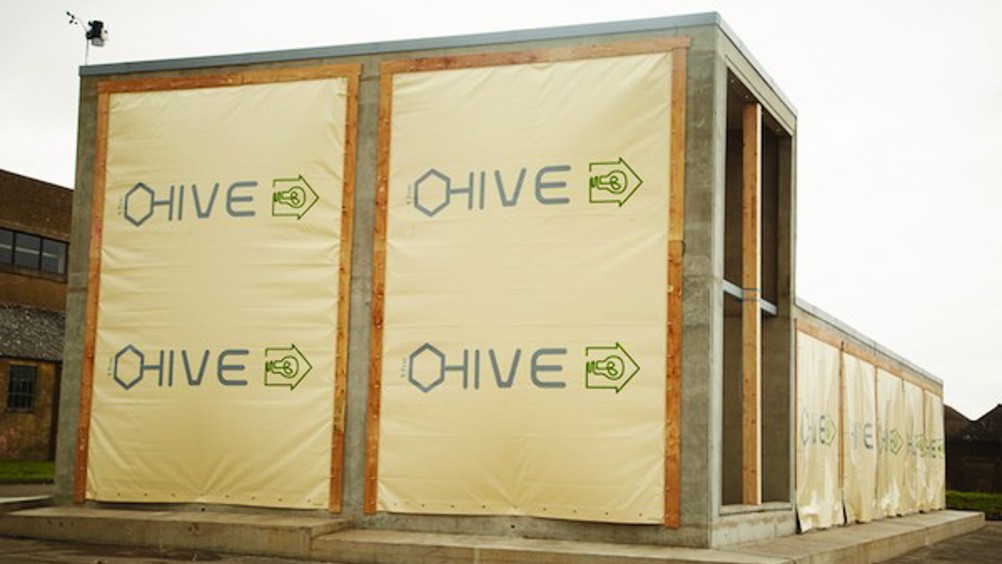Researchers use HIVE to test latest building methods
A new research facility in Wiltshire is set to advance the development of sustainable construction materials and systems.

Funded by EPSRC, the £1m HIVE facility will allow construction companies and researchers to conduct realistic, full-scale testing of their facade designs in open-air conditions.
HIVE, located at Bath University’s Building Research Park in Swindon, consists of eight cells that are insulated from one another, each with a single face left exposed to the external environment.
The cells themselves will let researchers analyse the environmental impact of construction materials including their energy efficiency, flood resilience, structural capability and internal air quality.
‘People are interested in looking at the latest iteration of their products and trying to compare them with previous iterations or with competitive products to see whether or not the performance is something to shout about,’ said Dr Mike Lawrence, director of the Building Research Park.
He cautioned, however, that related projects are beset with issues surrounding finding a suitable location to build, gaining planning permission and installing the infrastructure to carry projects out.
Register now to continue reading
Thanks for visiting The Engineer. You’ve now reached your monthly limit of news stories. Register for free to unlock unlimited access to all of our news coverage, as well as premium content including opinion, in-depth features and special reports.
Benefits of registering
-
In-depth insights and coverage of key emerging trends
-
Unrestricted access to special reports throughout the year
-
Daily technology news delivered straight to your inbox










Water Sector Talent Exodus Could Cripple The Sector
Maybe if things are essential for the running of a country and we want to pay a fair price we should be running these utilities on a not for profit...